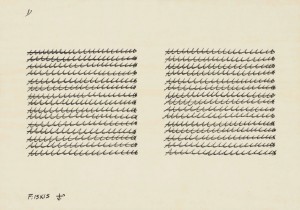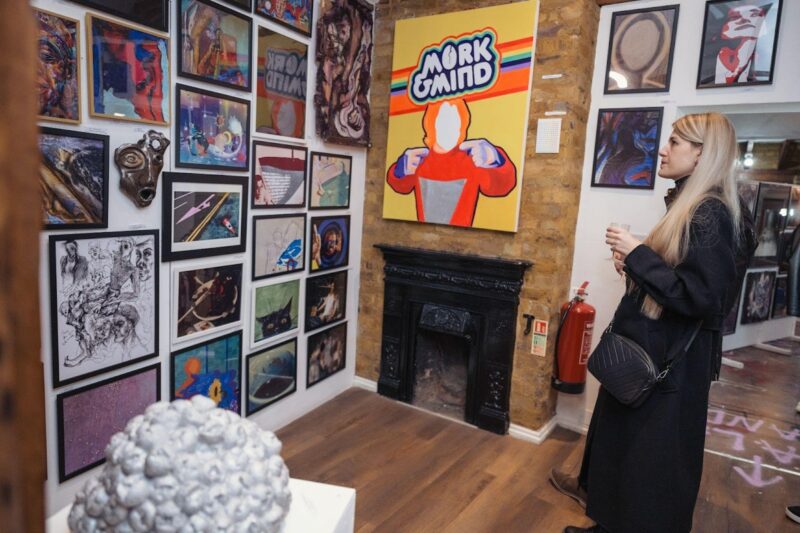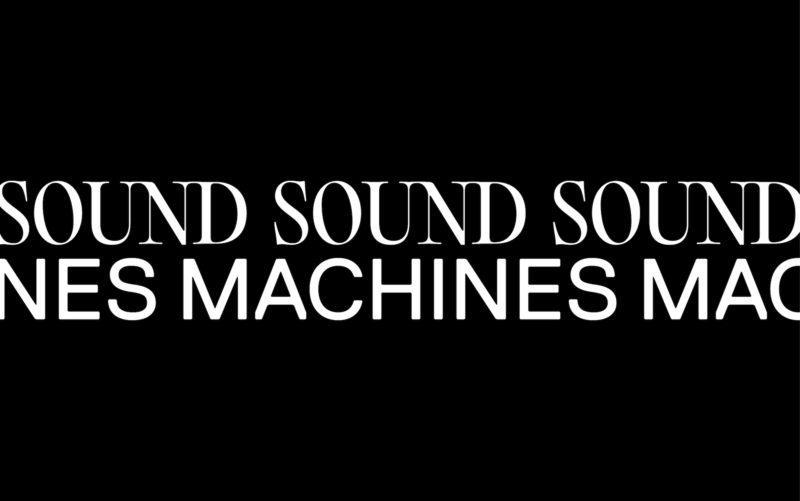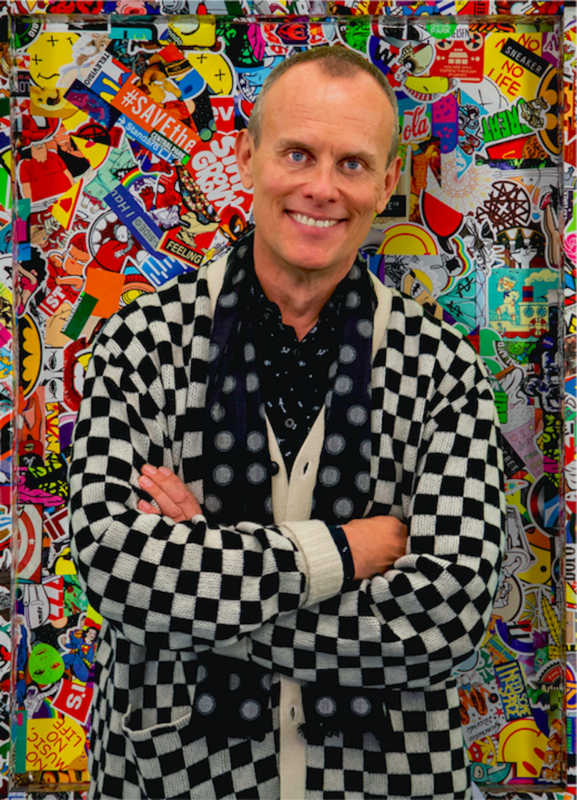
MoMA presents In & Out of Amsterdam: Travels in Conceptual Art, 1960-1976, an exhibition of 75 works by ten American and European artists relating to travel and the city of Amsterdam, on view from July 19 to October 5, 2009, in the Special Exhibitions Gallery on the third floor. The exhibition looks at Conceptual art practices between 1960 and 1976, focusing on ten artists—Bas Jan Ader, Stanley Brouwn, Hanne Darboven, Jan Dibbets, Ger van Elk, Sol LeWitt, Charlotte Posenenske, Allen Ruppersberg, Lawrence Weiner, and Gilbert & George—who traveled extensively in Amsterdam during that period. Many of the works included in the exhibition were shown in the Dutch city shortly after their creation, and are presented here for the first time in the United States.
This exhibition is joined by a related exhibition In & Out of Amsterdam: Art & Project Bulletin, 1968–1989, on view from July 15 to November 9, 2009, in The Paul J. Sachs Prints and Illustrated Books Gallery, second floor. The exhibition includes a selection of works from the 2007 gift to MoMA by Geert van Beijeren and Adriaan van Ravesteijn, founders of Art & Project (1968–2001), the leading Amsterdam gallery for Conceptual art. The gift comprises more than 230 works now housed across five curatorial departments in MoMA and has greatly reinforced the Museum’s holdings of Conceptual art. Both exhibitions are organized by Christophe Cherix, Curator, the Department of Prints and Illustrated Books, The Museum of Modern Art.
Mr. Cherix states: “In & Out of Amsterdam: Travels in Conceptual Art, 1960-1976 follows the trajectories of ten European and American artists who were all connected to the Dutch art gallery Art & Project, exploring how Conceptual art and travel operated interchangeably for a brief period of time. These artists saw art itself as a displacement from one location to another or one discipline to another, and travel as, first and foremost, an experience of the mind.”
In & Out of Amsterdam considers the cross-influences between Dutch and American art scenes, examining artists’ new mobility through their use of maps, posters, mail art, and artist publications. Many works also deal with notions of travel and displacement through drawings, photography, installations, and films. As a group these pieces helped broaden the definition of sculpture, demonstrating that it was no longer bound to a physical form but could exist as an idea in the mind of the viewer.
During the 1960s and 1970s, artists converged in Amsterdam, attracted by the Stedelijk Museum’s pioneering program in contemporary art, an up-and-coming gallery scene, progressive sociopolitical policies, and by the city itself, whose history had been shaped by successive waves of emigration and immigration. At the same time, many emerging Dutch artists sought opportunities to live and study abroad, often in England or the United States. While maintaining connections to their home, these artists frequently made work in response to their changing surroundings. Dutch artist Ger van Elk trained in Los Angeles, where he was soon rejoined by his fellow countryman Bas Jan Ader. Jan Dibbets moved from the Dutch provinces to study in London, where he met the British artists Gilbert & George, who, reciprocally, presented important early works in Amsterdam. Other American and European artists including Hanne Darboven, Charlotte Posenenske, Sol LeWitt, and Allen Ruppersberg also spent considerable amounts of time in Amsterdam, often producing works in direct relation to the city.
Hanne Darboven, whose first solo exhibition outside of Germany was held at Art & Project in 1970, is represented in MoMA’s exhibition through the large installation 100 Books 00–99 (1970), which consists of 100 mechanically printed books, each representing one year of a century. Like the work of her contemporary On Kawara, Darboven’s work suggests in its scale the enormity, and perhaps inaccessibility, of history as it is collected in books and other traditional media.
Fellow German artist Charlotte Posenenske also held her first solo exhibition outside Germany at Art & Project in 1968, which was the inaugural exhibition of the gallery. The galvanized steel modular sculptures Posenenske presented in that exhibition are reconstituted at MoMA. Also on display is an untitled film Posenenske made during a roadtrip in the south of Holland during 1968, documenting the country’s monotonous landscape through her car’s window. In these road movies, as in her other works, Posenenske emphasizes how repetition and arbitrariness allowed a certain freedom for the viewer as it did for her as an artist.
A number of the artists in MoMA’s exhibition employ humor in their practices. Two short films by Bas Jan Ader, both from 1970, feature the artist performing comical stunts: in Fall 1, Los Angeles, Ader tumbles from the roof of his Los Angeles house into the bushes below, and in Fall 2, Amsterdam, he rides a bicycle along the Reguliersgracht canal in Amsterdam before riding off the edge and into the water. In Ger van Elk’s Paul Klee-Um den Fisch, 1926 (Around the Fish) (1970), slide projections reveal the artist appearing to eat a fish dinner modeled on Paul Klee’s well-known still-life painting Um den Fisch (1926), which is in MoMA’s collection and on view in the fifth-floor Painting and Sculpture Galleries. Gilbert & George, who have presented themselves as a single artist since they began their collaboration in 1967, reveal a unique sense of humor with The Tuileries (1974). This work comprises charcoal drawings of the Parisian park, with the drawings covering not only the gallery walls but also the furniture in the room.
The third-floor exhibition begins and ends with the American artist Lawrence Weiner, who first traveled to Amsterdam in 1963. In the corridor leading into the exhibition galleries, a site-specific design element created by Weiner and commissioned by MoMA references the artist’s time in Amsterdam, where he has maintained a residence on a houseboat since 1970. The windows along the hallway are obscured by grey vinyl, with a handful of “portholes” cut out so that viewers can look through the windows and onto The Abby Aldrich Rockefeller Sculpture Garden below. The symbol of the city of Amsterdam—three St. Andrew’s crosses—is also incorporated into the design. Opposite Weiner’s installation, a selection of street posters are on display, creating a timeline of important events, exhibitions, festivals, and protests in Amsterdam during the 1960s and 1970s. Finally, the exhibition concludes with Weiner’s text piece, IN AND OUT. OUT AND IN. AND IN AND OUT. AND OUT AND IN (1970). Weiner, who is best known for using language as a primary material for art, places this text onto the four windows overlooking West Fifty-third street, with the words also visible from the street level.
In The Paul J. Sachs Prints and Illustrated Books Gallery on the second floor, In & Out of Amsterdam: Art & Project Bulletin, 1968–1989 is organized around the 2007 Art & Project/Depot VBVR Gift to MoMA. Art & Project regularly published a bulletin whose content was entirely left up to invited artists. Each Art & Project Bulletin—a single sheet of paper, folded in half, and printed on both sides—became an exhibition space, distinct from the rooms of the gallery, with the unique ability to reach a broad international community by mail. The bulletins were designed by artists including Richard Long, Marcel Broodthaers, Alighiero e Boetti, and the ten featured artists, among others. Art & Project recognized the desire of a new generation of artists in Europe, the United States, and Japan to free themselves from the commodification of art by turning to language to communicate their ideas. MoMA’s exhibition includes the complete run of 156 bulletins published through Art & Project, offering an extraordinary glimpse into the emergence of a new art—one whose reverberations are still widely felt. Groupings of work by specific artists within the Art & Project Gift, such as Robert Barry, William Leavitt, and Sol LeWitt, are interspersed with the bulletins in the gallery.
Image:Hanne Darboven. (German, 1941-2009), Untitled. c. 1972. Ink on ten pieces of transparent paper (one shown), each 11 5/8 x 16 1/2″ (29.5 x 41.9 cm). The Museum of Modern Art, New York. Art & Project/Depot VBVR Gift. © 2009 Hanne Darboven. The Museum of Modern Art Digital Imaging Studio, photograph: Jonathan Muzikar Via Art Daily









